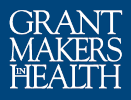Humana Foundation Advances Equity Through Community-Engaged Research Practices
Grantmakers In Health’s Maya Schane spoke with Heather Hyden and Soojin Conover of the Humana Foundation about the Foundation’s recently published report, Strengthening Science and Community Impact Through Equitable Research Practices. The report examines innovative research methods adopted by the Foundation’s partners to promote health equity in public health research through community-engaged research practices.
Collaborating for Impact: Providing Trust-Based Grantmaking and Technical Assistance to Support Local Resilience to Extreme Weather Events
In the last few years, there has been an increased number of extreme weather events, including wildfires, tornadoes, hurricanes, floods and heatwaves in the United States. In 2023, the United States experienced 28 disasters that cost at least $1 billion, the largest number of billion-dollar disasters in a single year on record (Smith 2024). While some areas of the country are more susceptible to these threats, there are no regions immune to disasters. According to a recent Gallup poll, 37 percent of adults in the United States report they have been personally impacted by at least one extreme weather event in the last two years, which is higher than the 2022/2023 survey result at 33 percent.
Philanthropy @ Work – Transitions – August 2019
The latest on transitions from the field.
Helping Philanthropy Be Its Best
We asked our colleagues to reflect on the 2019 GIH annual conference theme of Ideas. Innovations. Impact. The resulting articles pursue a variety of themes, but collectively they make abundantly clear that the central role played by PSOs—making connections among funders in order to stimulate lasting change and improve quality-of-life—continues to be vitally important.
Philanthropy @ Work – Grants and Programs – June/July 2019
The latest on grants and programs from the field.
New York State Health Foundation: July 2019
Even after controlling for differences in local prices and health status, there was a 34 percent difference between the lowest- and highest-spending counties’ per capita Medicare spending in 2016.

